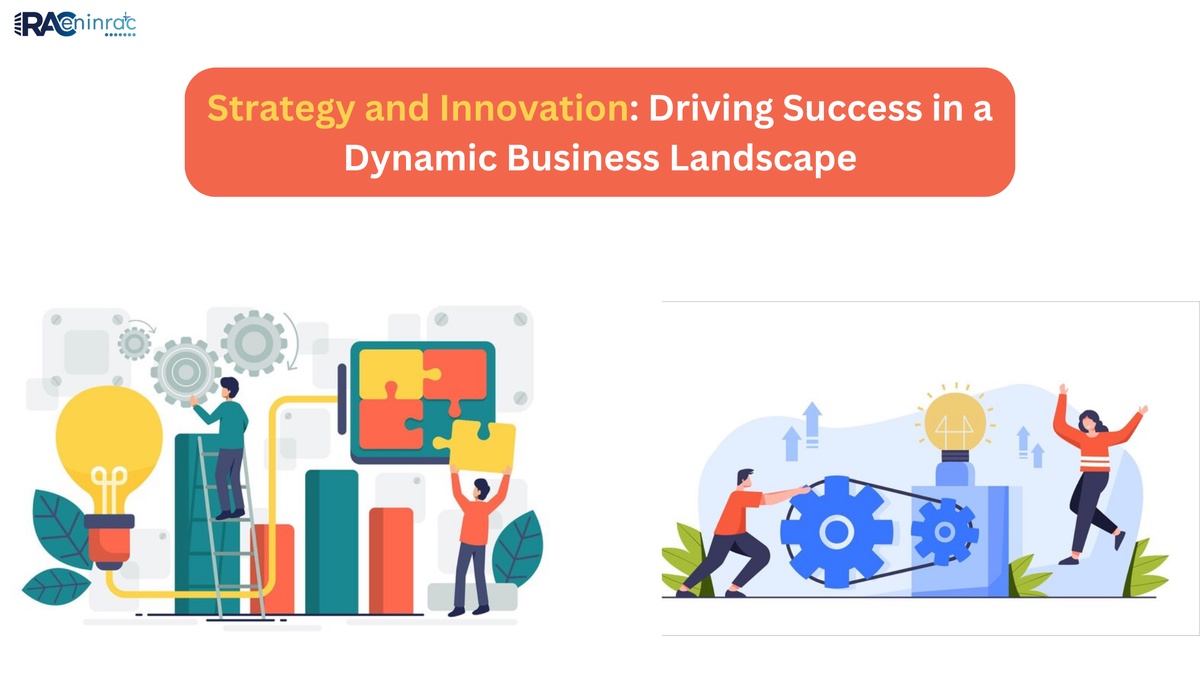Introduction: In today's rapidly evolving business landscape, the symbiotic relationship between strategy and innovation is more critical than ever. While strategy provides a roadmap for achieving organizational goals, innovation fuels growth and differentiation, enabling businesses to stay ahead of the curve. In this blog, we will explore the intertwined nature of strategy and innovation, their significance in driving business success, and strategies for fostering a culture of innovation within organizations.
Understanding Strategy and Innovation:
Strategy: At its core, strategy involves setting goals, making choices, and allocating resources to achieve desired outcomes. It encompasses a holistic approach to analyzing the competitive landscape, understanding market dynamics, and identifying opportunities for sustainable growth. Strategic planning involves defining the organization's mission, vision, and values, as well as formulating actionable plans to achieve strategic objectives.
Innovation: Innovation is the process of generating and implementing novel ideas, products, services, or processes that create value for customers and stakeholders. It encompasses creativity, experimentation, and problem-solving, driving continuous improvement and adaptation to changing market conditions. Innovation can take various forms, including product innovation, process innovation, business model innovation, and technological innovation.
The Interplay Between Strategy and Innovation:
Strategy and innovation are intertwined and mutually reinforcing concepts that drive organizational success in several ways:
Strategic Innovation: Strategic innovation involves aligning innovation efforts with strategic goals to create a competitive advantage and drive sustainable growth. By integrating innovation into strategic planning processes, organizations can identify new market opportunities, anticipate customer needs, and develop innovative solutions that meet evolving demands.
Innovation-Led Strategy: In today's disruptive business environment, innovation often serves as a catalyst for shaping strategic direction and driving organizational change. Businesses that prioritize innovation-led strategies are better equipped to adapt to market disruptions, capitalize on emerging trends, and outperform competitors in dynamic markets.
Competitive Differentiation: Innovation enables businesses to differentiate themselves from competitors by offering unique products, services, or experiences that resonate with customers. By leveraging innovation to create distinctive value propositions, businesses can enhance brand loyalty, increase market share, and command premium prices in the marketplace.
Risk Mitigation: Strategic innovation allows organizations to proactively identify and mitigate risks associated with market volatility, technological disruptions, and changing customer preferences. By continuously innovating and diversifying their product portfolios, businesses can reduce dependence on a single revenue stream and enhance resilience against external threats.
Strategies for Fostering a Culture of Innovation:
Building a culture of innovation requires a concerted effort to foster creativity, experimentation, and collaboration within organizations. Here are some strategies for cultivating an innovation-driven culture:
Leadership Commitment: Leadership plays a crucial role in championing innovation and fostering a supportive environment for creative thinking and risk-taking. Leaders should communicate a clear vision for innovation, allocate resources, and empower employees to explore new ideas and initiatives.
Encouraging Diversity and Inclusion: Diversity of thought, background, and experience fosters creativity and innovation by bringing together diverse perspectives and ideas. Organizations should promote diversity and inclusion initiatives to ensure that all voices are heard and valued in the innovation process.
Promoting Cross-Functional Collaboration: Innovation thrives when teams collaborate across departments, disciplines, and hierarchies. Encouraging cross-functional collaboration enables organizations to leverage diverse expertise and insights to tackle complex challenges and drive innovation initiatives forward.
Creating a Safe Environment for Experimentation: Failure is an inevitable part of the innovation process. Organizations should create a safe environment where employees feel empowered to experiment, take risks, and learn from failures without fear of retribution. Celebrating both successes and failures encourages a culture of continuous learning and improvement.
Investing in Learning and Development: Providing employees with opportunities for learning, training, and skill development cultivates a culture of curiosity and lifelong learning. Organizations should invest in programs that support professional growth, encourage knowledge sharing, and nurture innovation capabilities across the organization.
Case Study:
Apple Inc. exemplifies the symbiotic relationship between strategy and innovation, driving its success through a relentless focus on groundbreaking products and disruptive technologies. From the introduction of the iPod and iTunes ecosystem to the revolutionary iPhone and App Store, Apple has consistently redefined industries and captured the imagination of consumers worldwide.
Apple's strategic innovation is evident in its commitment to design excellence, seamless integration of hardware and software, and customer-centric approach to product development. By anticipating market trends, understanding consumer needs, and delivering innovative solutions that exceed expectations, Apple has established itself as a global leader in technology and innovation.
Conclusion:
Strategy and innovation are two sides of the same coin, working in tandem to drive organizational success and sustainable growth. By aligning innovation efforts with strategic goals, organizations can unlock new opportunities, differentiate themselves from competitors, and adapt to the evolving demands of the market. Fostering a culture of innovation requires leadership commitment, cross-functional collaboration, and a supportive environment that encourages experimentation and learning. By embracing innovation as a strategic imperative, organizations can navigate uncertainty, capitalize on emerging trends, and create value for customers, stakeholders, and society as a whole.
More market research, advisory consulting services to discover
At Eninrac, we offer a wide range of, advisory consulting solutions, from We put ‘search’ in research to help expand your business with ease. Discover all the possibilities now.


No comments yet